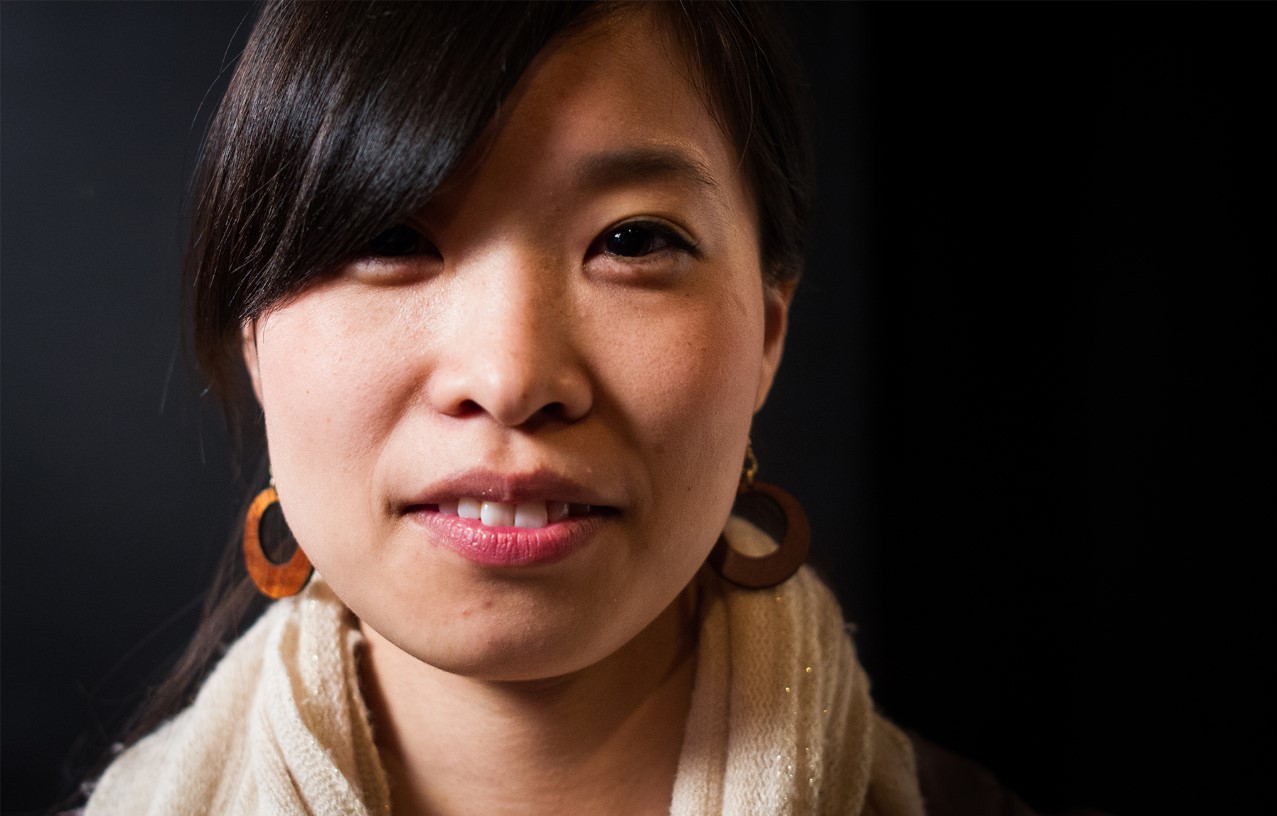Yu Shibagaki has had a prolific few months. On top of designing sets for two plays showing in Chicago in March — School Girls; Or, The African Mean Girls Play at Goodman Theatre and Her Honor Jane Byrne at Lookingglass — Shibagaki worked on a third, How to Defend Yourself, which closed at Victory Gardens last week.
But even as Chicago's premier theater companies continue to come knocking for her sets, the Nagoya native downplays her ability to juggle multiple projects at once.
“It’s tough,” Shibagaki says. “I think some people are a lot better at multitasking than I am.”
Shibagaki, 35, moved to the United States from Japan when she was 19, eventually earning her MFA in Scenic Design from Northwestern University. After graduating, she lived in Chicago for six more years before moving to New York. But distance has only made Chicago’s theater scene fonder of Shibagaki's work: Leading up to her marquee-happy winter, she worked on four other Chicago shows in 2019.
“Every time I come back, there is a huge warm welcome from everybody that I work with,” she says. “I love that I didn’t cut off completely from Chicago.”
What inspired you to work behind the scenes of theater productions?
My passion started when I was in elementary school. My father was a producer for local TV, and we were able to go backstage at rock concerts where all these stars would perform. We were so excited, but we weren’t allowed to be excited — we had to stand still and just watch.
What struck me the most were the people who wore all black and were running around sweating before the star went on. I thought that those people were so cool!
What's your thought process while planning and executing a new set design?
I read the script a couple times before I talk with the director in order to get a sense of the movement and what the characters generally do. I grab that intuitively and trust my reaction to the show. After I’ve prepared my research, I listen to what a director has to say and trust their sense if it feels right. I ask a lot of questions. During the technical rehearsal, I go in and really point out smaller items and make notes.
People get really excited when seeing a set three-dimensionally, so I try to do that by creating physical models as much as possible. Sometimes I show my model and it’s completely wrong, so I start over, and that’s also great! I do a lot of starting over.
You've worked on musicals, comedies, and dramatic plays. What genres are you most drawn to as a set designer and as an audience member?
It has a lot to do with the director. Marti Lyons [the Chicago-based director of How to Defend Yourself] is one of my favorite directors to work with, and she’s a great friend of mine now. I tend to love the shows she picks.
I’m not a huge fan of musicals. I love seeing them, but there is this aspect of theatricality that I’m not so interested in. If there is a musical with a concept that I find exciting, I’ll do it, but I tend to like shows that are quieter and more psychological.

Photo: Liz Lauren
I saw a photo from your production of The Maids [Jean Genet’s play detailing the dangerous antics of two maids left alone by their wealthy employer], in which a large eye was projected onto the backdrop. What were you intending to stir psychologically in the audience?
We liked this idea of how the two maids were always in the house feeling trapped. When their master is out of the house, they feel great; they can enjoy the space and the luxuries. Basically, the maids were always haunted by the Madame coming back and finding the real truth about them, so we projected an eye up on the stage to represent the threat of her watching. Madame only comes back for a few scenes, so having her presence throughout the show was really important.
What’s your goal as a set designer?
I want to create a world where people don’t think about the set design. I’d like it to be so integrated into the world that people think about the whole experience — not, “Oh, this set design is great.”



